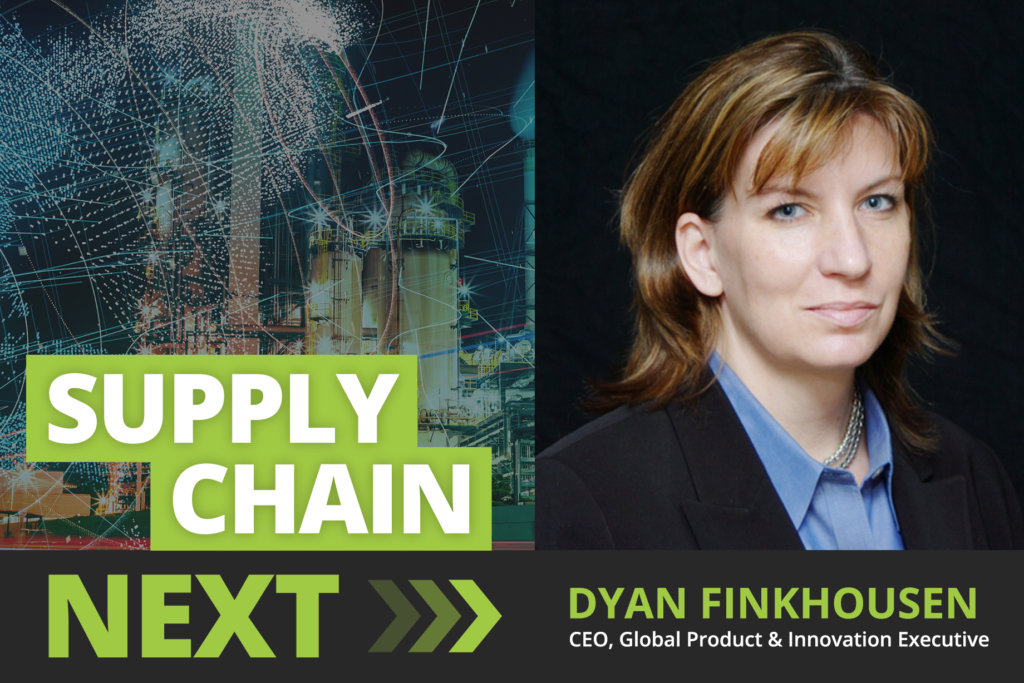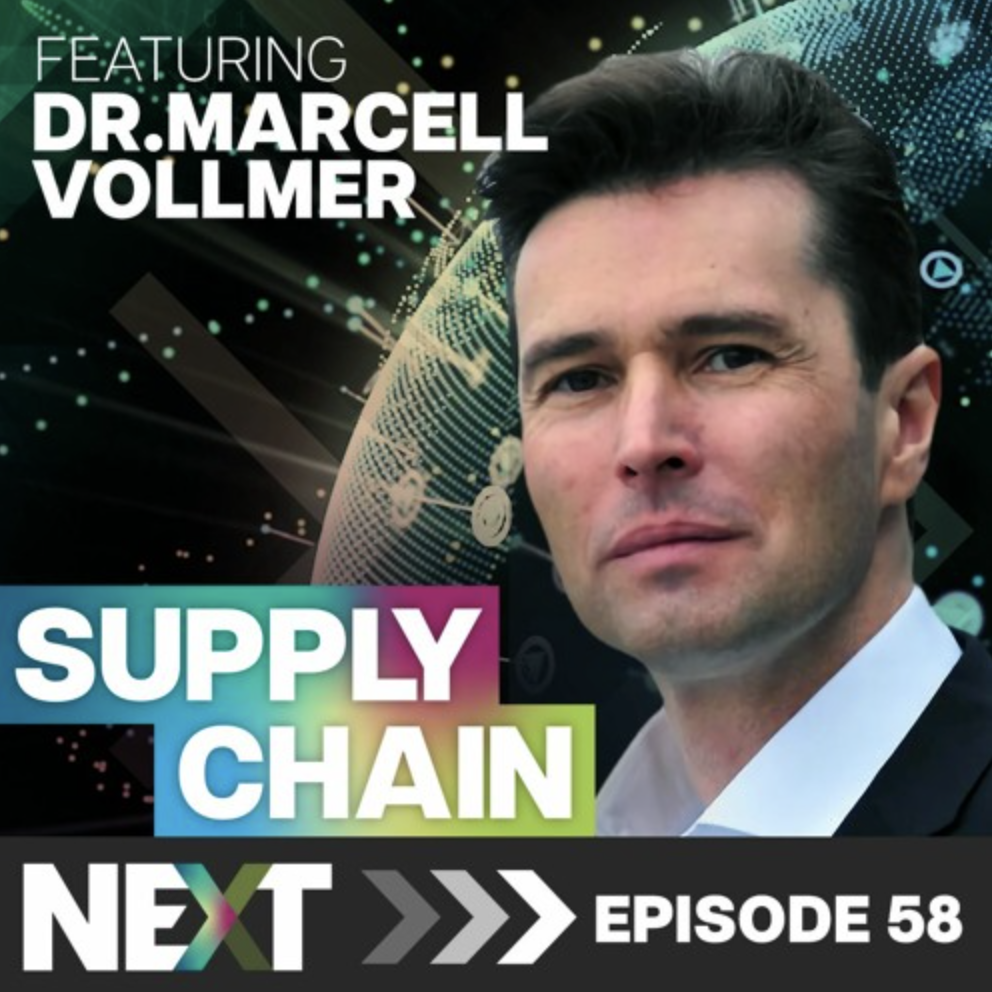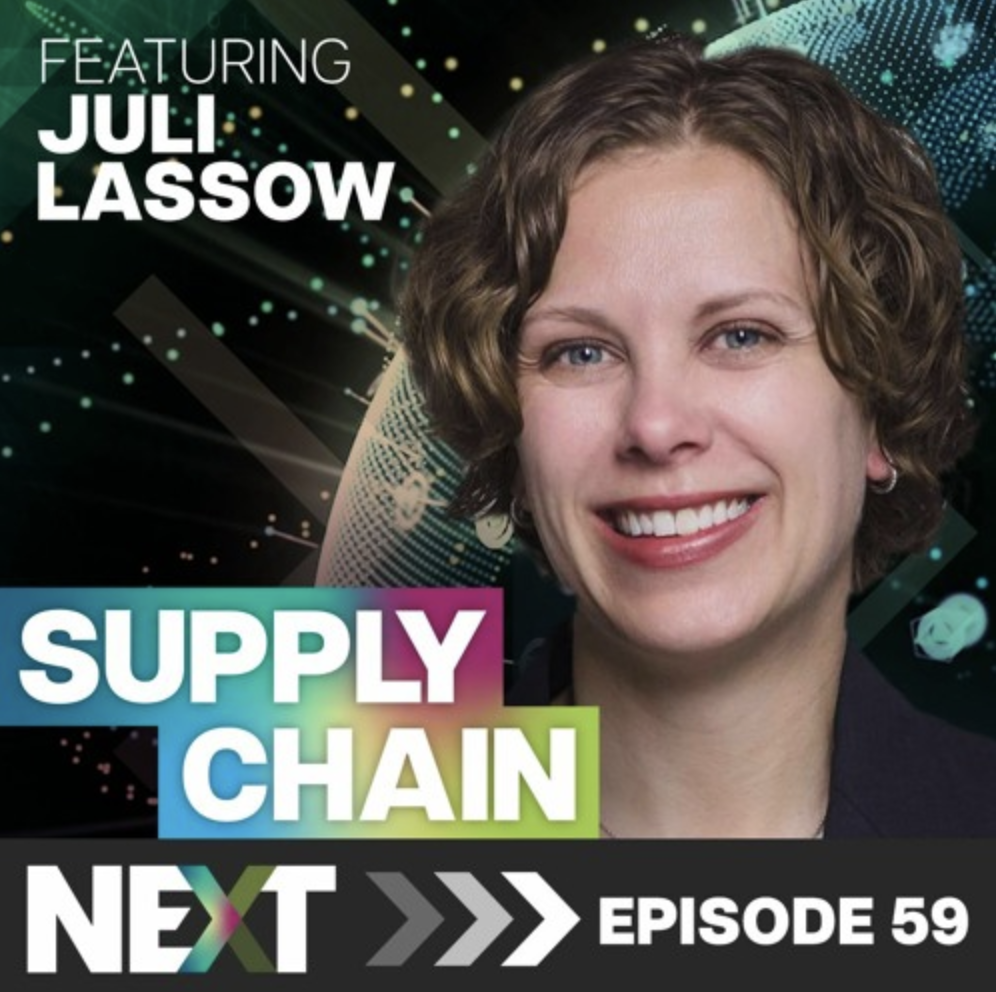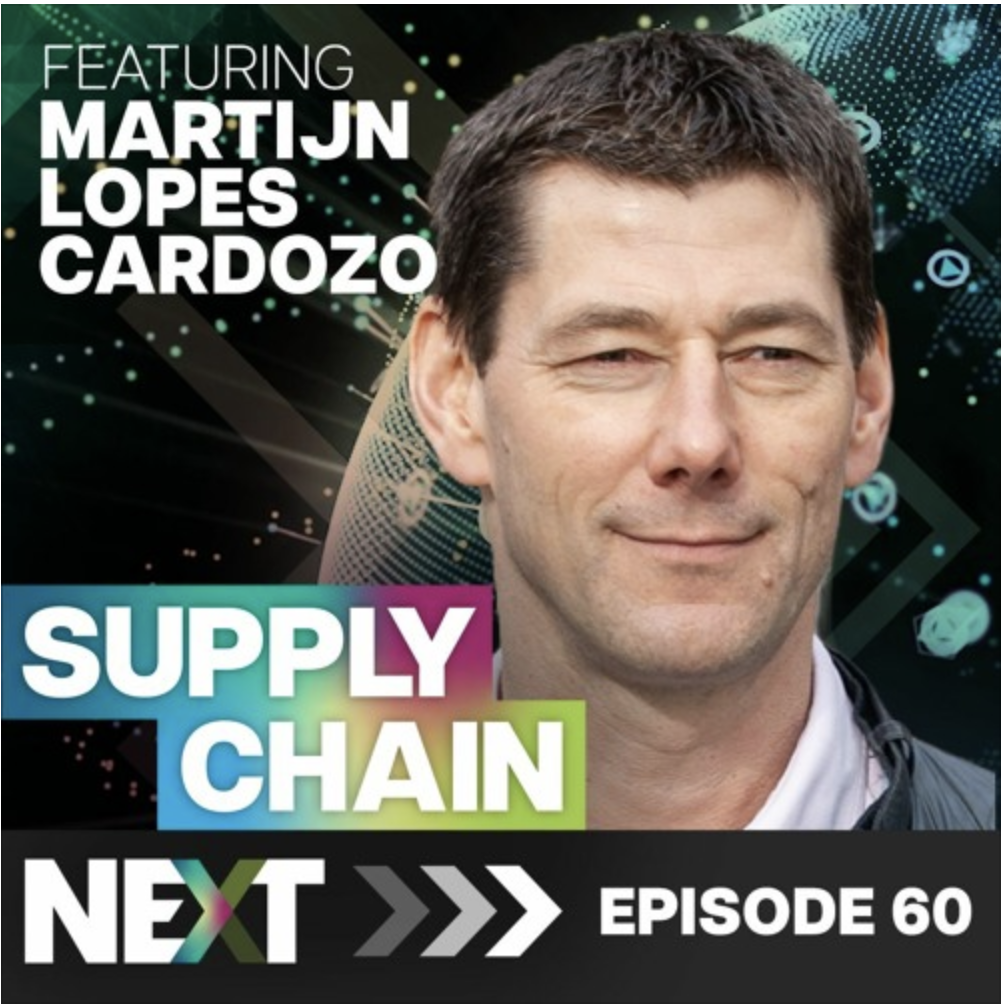Episode 8
Podcast: Dyan Finkhousen on GE’s Transition to a Digital Platform Ecosystem
GE went from a high-quality, highly complex, but traditional legacy supply chain to an agile digitized innovator. The success and lessons learned from this transformation have incredible value for other industrial supply chains that haven’t yet made the leap to full digital transparency.
Platform and innovation expert Dyan Finkhousen talks about the key challenges GE faced and the strategies GE used with Supply Chain Next host Richard Donaldson. She provides insights on how other organizations can develop their own road map, and shares what she sees coming up in the next few years as the Decade of Supply Chain unfolds.

Highlights from the Conversation
“Technology serves no purpose except to elevate the human experience.”
– Dyan Finkhousen
Success Can Be the Enemy of Adaptive Change
- Digitally native organizations have an advantage over legacy operations right now, because they don’t have to run by two playbooks. Legacy organizations must run two systems in parallel while the transition to digital is in progress.
- One of the main challenges for GE was to maintain high volume, high quality throughput to customers while the changes were taking place.
- When creating a digitization road map, first and foremost you must address the mindset. Only when mindset has been reshaped can you dig into the methodology.
- The second challenge: tenured, successful supply chain management professionals can be resistant to change. They rely on what they know, who they know, and what they’ve done. You have to build trust and understanding with them before you can start to apply new technologies and models for operations. Highly seasoned and highly technical pros can be hard coded!
- To overcome resistance, work on several layers within the organization at the same time.
- Make sure you have executive air cover and support going in. To win over executives, show them the outcomes they can achieve on this different tack.
- To win over line item managers who own budgets and performance targets, show them what can be achieved using relevant case studies from similar cohorts. If you’re talking to a supply chain leader, show them what other supply chain leaders have been able to achieve with the new model and the new technology. They’ll be able to see their own pain and their own opportunities using the examples of trusted peers.
Developing a Process Road Map
- Once you’ve created a mindset that is open to change you can start planning the new business system. The solution will be highly contextualized.
- Identify legacy assumptions and constraints that no longer necessarily apply.
- The professionals running these systems are often too focused on getting things done to be able to see these assumptions.
- Look at emerging technologies and business models that can be woven into operations to transform business outcomes— the idea is to unlock hidden value that may be hidden by the legacy performance governance systems.
- Look at available systems and evaluate them.
- Choose and start working with a digital solution (this will, more than likely, involve the adoption of a platform).
Platform Strategy
- Paradigm 1: business strategists should be looking past their traditional playbook and should start looking at accomplishing the business priorities for the coming year.
- The goal is to put priorities that can be achieved through digital means first.
- Secondly, of the remaining activities that require a human touch, decide which ones can be accomplished through flexible— not fixed— resources. Start thinking about leveraging expert ecosystems to run your business play.
- Third, think about the full time employees you’ll need to have on staff to orchestrate and run the first two sets of goals.
- This is an inversion of the traditional resourcing playbook. You’re starting with digital first, flex next, then (and only then) core staff.
- Paradigm 2: the platform capability should be the new operating model for many businesses. The platform approach to delivering operations gives you the ability to weave a digital thread across the entire landscape of your business activities, capture data (for decision support tools), and progressively automate as the maturity curve unfolds.
- You’re creating tools to make your employees more successful as the system learns.
- As your operations become more distributed and better informed you can step up more automated and distributed decision making, removing gatekeepers and roadblocks.
- As you progress, you can optimize your operations using your data and algorithms that will improve decisions, operations and outcomes.
Collective Benefits from Multi-Tenant Platforms
- Multi-tenant platforms are already delivering benefits to members today.
- A good marketplace steward can facilitate information sharing so all users rise.
- A marketplace approach is a natural and obvious fit for supply chain. The marketplace approach removes more rigid constraints so supply chain managers can access information and solutions in a broader community more quickly and cost-effectively.
- A good marketplace orchestrator will have the obvious security safeguards in place but will make sure the whole community benefits from the higher velocity and higher precision transactions.
The Evolution of Platforms in the Next Five to Eight Years
- In the future, platforms will become deep repositories for high-value information that can be converted into meaningful insights for marketplace members.
- Platforms will be helping supply chain managers make better decisions on who they’re connecting with. This will inform better transactions and outcomes.
- These marketplaces will evolve into learning systems.
Working with Geoffrey Parker and Marshall Van Alstyne
- Dyan was a huge fan of the Platform Revolution book, as it was very closely aligned with the journey she was on with GE.
- She joined the Platform Strategy Institute in fall 2019. The institute members learn from best-of-breed platform strategists and aggregates their insights with deep research of their own. The goal is to help others who are either building platform businesses or who are transforming legacy businesses.
- The institute has launched several studies on topics including talent acquisition, platform strategy roles, and how sound and audio tools can improve the experience in platforms.
- Listen to Geoffrey Parker on Supply Chain Next >
Find more conversations with supply chain experts on Supply Chain Next.
Visit Supply Chain Next on Soundcloud >
About Dyan Finkhousen
Dyan Finkhousen is CEO and founder of Shoshin Works, a consulting firm that helps enterprise-scale organizations take advantage of digital platforms and ecosystems to optimize performance.
Before kickstarting her own company, she spent 23 years at GE in a variety of roles, specializing in innovations that produce major impacts. Her roles at GE included Global Director of Open Innovation and Advanced Manufacturing, and Founder of GE GeniusLink and GE Fuse, where she cultivated an expert ecosystem with reach to over 21 million resources and enabled over $6 billion in impact. She also helped coach GE’s industrials on the development of new IoT product and service portfolios, and oversaw the development of GE’s global IoT brand, Predix.
Her pioneering platform and ecosystem work in connected vehicles, connected equipment, and now connected experts has enabled organizations in financial, industrial and healthcare sectors to optimize performance.
Valued for her record of creating and scaling transformational business models, Dyan has served on client advisory boards for expert economy companies and is an advisor and founding member of Open Assembly.
Her award-winning thought leadership has been showcased in The Wall Street Journal, Forbes, Wired, Harvard Innovation Lab, Harvard Analytics curriculum, MIT Sloan, Singularity University, Cooper-Hewitt Museum, Nikkei Business, CIO Review, Slush, keynote speaking engagements, and podcasts.
Follow Dyan Finkhousen on LinkedIn >
More Episodes
You can listen to our audio tracks and read highlights for each episode below.
We’ve also started publishing video episodes on our YouTube channel.
058 – Dr Marcell Vollmer – Tech in Supply Chain, and the Sustainability Shift
Supply Chain Next · 058 – Dr Marcell Vollmer – Tech in Supply Chain, and the Sustainability Shift Meet Dr. Marcell Vollmer Dr. Marcell Vollmer, a renowned expert in the fields of digitalization, innovation, and sustainability. Marcell is a sought-after speaker and author that has dedicated his career to helping companies and individuals navigate the rapidly…
059 – Juli Lassow – Revolutionizing Retail, Sustainable Strategies, & the Future of Partnerships
Supply Chain Next · 059 – Juli Lassow – Revolutionizing Retail, Sustainable Strategies, & the Future of Partnerships Juli Lassow ,founder of JHL Solutions Meet Juli Lassow Juli Lassow, an accomplished retail professional, speaker, writer, and sustainability advocate, is the founder of JHL Solutions, a consultancy focused on creating outstanding private-label partnerships. With a deep…
060 – Martijn Lopes Cardozo – Circular Supply Chain
Supply Chain Next · 060 – Martijn Lopes Cardozo – Circular Supply Chain Martijn Lopes Cardozo, CEO at Circle Economy Meet Martijn Lopes Cardozo Martijn, a seasoned entrepreneur, has an impressive track record of establishing prosperous ventures within the realms of software, mobile, and digital media in California. Upon returning to the Netherlands, he…



